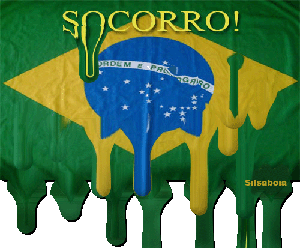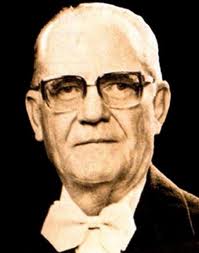Israelis ‘blew apart Syrian nuclear cache'
IT was just after midnight when the 69th Squadron of Israeli F15Is crossed the Syrian coast-line. On the ground, Syria’s formidable air defences went dead. An audacious raid on a Syrian target 50 miles from the Iraqi border was under way.
At a rendezvous point on the ground, a Shaldag air force commando team was waiting to direct their laser beams at the target for the approaching jets. The team had arrived a day earlier, taking up position near a large underground depot. Soon the bunkers were in flames.
Ten days after the jets reached home, their mission was the focus of intense speculation this weekend amid claims that Israel believed it had destroyed a cache of nuclear materials from North Korea.
The Israeli government was not saying. “The security sources and IDF [Israeli Defence Forces] soldiers are demonstrating unusual courage,” said Ehud Olmert, the prime minister. “We naturally cannot always show the public our cards.”
A tale of two dictatorships: The links between North Korea and Syria
The Syrians were also keeping mum. “I cannot reveal the details,” said Farouk al-Sharaa, the vice-president. “All I can say is the military and political echelon is looking into a series of responses as we speak. Results are forthcoming.” The official story that the target comprised weapons destined for Hezbollah, the Iranian-backed Lebanese Shi’ite group, appeared to be crumbling in the face of widespread scepticism.
Andrew Semmel, a senior US State Department official, said Syria might have obtained nuclear equipment from “secret suppliers”, and added that there were a “number of foreign technicians” in the country.
Asked if they could be North Korean, he replied: “There are North Korean people there. There’s no question about that.” He said a network run by AQ Khan, the disgraced creator of Pakistan’s nuclear weapons, could be involved.
But why would nuclear material be in Syria? Known to have chemical weapons, was it seeking to bolster its arsenal with something even more deadly?
Alternatively, could it be hiding equipment for North Korea, enabling Kim Jong-il to pretend to be giving up his nuclear programme in exchange for economic aid? Or was the material bound for Iran, as some authorities in America suggest?
According to Israeli sources, preparations for the attack had been going on since late spring, when Meir Dagan, the head of Mossad, presented Olmert with evidence that Syria was seeking to buy a nuclear device from North Korea.
The Israeli spy chief apparently feared such a device could eventually be installed on North-Korean-made Scud-C missiles.
“This was supposed to be a devastating Syrian surprise for Israel,” said an Israeli source. “We’ve known for a long time that Syria has deadly chemical warheads on its Scuds, but Israel can’t live with a nuclear warhead.”
An expert on the Middle East, who has spoken to Israeli participants in the raid, told yesterday’s Washington Post that the timing of the raid on September 6 appeared to be linked to the arrival three days earlier of a ship carrying North Korean material labelled as cement but suspected of concealing nuclear equipment.
The target was identified as a northern Syrian facility that purported to be an agricultural research centre on the Euphrates river. Israel had been monitoring it for some time, concerned that it was being used to extract uranium from phosphates.
According to an Israeli air force source, the Israeli satellite Ofek 7, launched in June, was diverted from Iran to Syria. It sent out high-quality images of a northeastern area every 90 minutes, making it easy for air force specialists to spot the facility.
Early in the summer Ehud Barak, the defence minister, had given the order to double Israeli forces on its Golan Heights border with Syria in anticipation of possible retaliation by Damascus in the event of air strikes.
Sergei Kirpichenko, the Russian ambassador to Syria, warned President Bashar al-Assad last month that Israel was planning an attack, but suggested the target was the Golan Heights.
Israeli military intelligence sources claim Syrian special forces moved towards the Israeli outpost of Mount Hermon on the Golan Heights. Tension rose, but nobody knew why.
At this point, Barak feared events could spiral out of control. The decision was taken to reduce the number of Israeli troops on the Golan Heights and tell Damascus the tension was over. Syria relaxed its guard shortly before the Israeli Defence Forces struck.
Only three Israeli cabinet ministers are said to have been in the know ? Olmert, Barak and Tzipi Livni, the foreign minister. America was also consulted. According to Israeli sources, American air force codes were given to the Israeli air force attaché in Washington to ensure Israel’s F15Is would not mistakenly attack their US counterparts.
Once the mission was under way, Israel imposed draconian military censorship and no news of the operation emerged until Syria complained that Israeli aircraft had violated its airspace. Syria claimed its air defences had engaged the planes, forcing them to drop fuel tanks to lighten their loads as they fled.
But intelligence sources suggested it was a highly successful Israeli raid on nuclear material supplied by North Korea.
Washington was rife with speculation last week about the precise nature of the operation. One source said the air strikes were a diversion for a daring Israeli commando raid, in which nuclear materials were intercepted en route to Iran and hauled to Israel. Others claimed they were destroyed in the attack.
There is no doubt, however, that North Korea is accused of nuclear cooperation with Syria, helped by AQ Khan’s network. John Bolton, who was undersecretary for arms control at the State Department, told the United Nations in 2004 the Pakistani nuclear scientist had “several other” customers besides Iran, Libya and North Korea.
Some of his evidence came from the CIA, which had reported to Congress that it viewed “Syrian nuclear intentions with growing concern”.
“I’ve been worried for some time about North Korea and Iran outsourcing their nuclear programmes,” Bolton said last week. Syria, he added, was a member of a “junior axis of evil”, with a well-established ambition to develop weapons of mass destruction.
The links between Syria and North Korea date back to the rule of Kim Il-sung and President Hafez al-Assad in the last century. In recent months, their sons have quietly ordered an increase in military and technical cooperation.
Foreign diplomats who follow North Korean affairs are taking note. There were reports of Syrian passengers on flights from Beijing to Pyongyang and sightings of Middle Eastern businessmen from sources who watch the trains from North Korea to China.
On August 14, Rim Kyong Man, the North Korean foreign trade minister, was in Syria to sign a protocol on “cooperation in trade and science and technology”. No details were released, but it caught Israel’s attention.
Syria possesses between 60 and 120 Scud-C missiles, which it has bought from North Korea over the past 15 years. Diplomats believe North Korean engineers have been working on extending their 300-mile range. It means they can be used in the deserts of northeastern Syria ? the area of the Israeli strike.
The triangular relationship between North Korea, Syria and Iran continues to perplex intelligence analysts. Syria served as a conduit for the transport to Iran of an estimated £50m of missile components and technology sent by sea from North Korea. The same route may be in use for nuclear equipment.
But North Korea is at a sensitive stage of negotiations to end its nuclear programme in exchange for security guarantees and aid, leading some diplomats to cast doubt on the likelihood that Kim would cross America’s “red line” forbidding the proliferation of nuclear materials.
Christopher Hill, the State Department official representing America in the talks, said on Friday he could not confirm “intelligence-type things”, but the reports underscored the need “to make sure the North Koreans get out of the nuclear business”.
By its actions, Israel showed it is not interested in waiting for diplomacy to work where nuclear weapons are at stake.
As a bonus, the Israelis proved they could penetrate the Syrian air defence system, which is stronger than the one protecting Iranian nuclear sites.
This weekend President Mahmoud Ahmadinejad of Iran sent Ali Akbar Mehrabian, his nephew, to Syria to assess the damage. The new “axis of evil” may have lost one of its spokes.
http://www.timesonline.co.uk/tol/news/w ... 461421.ece










